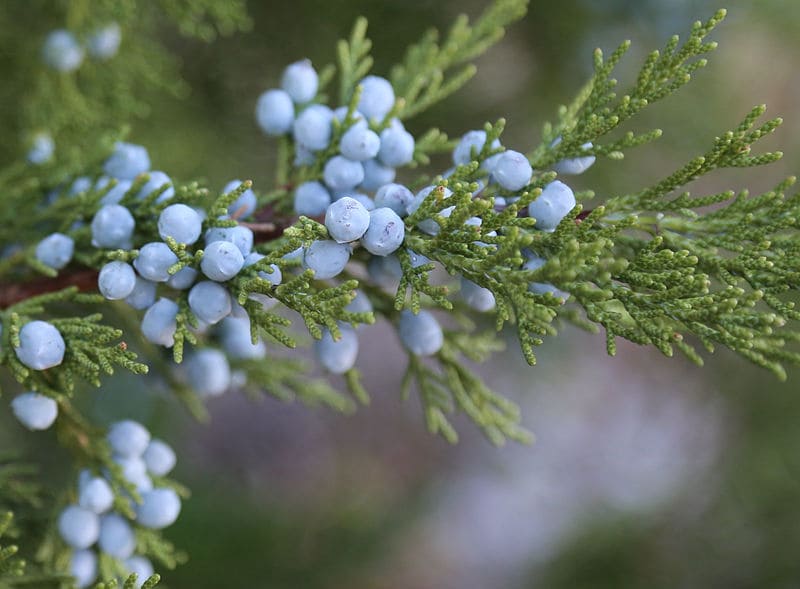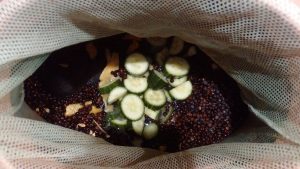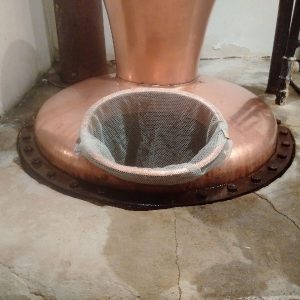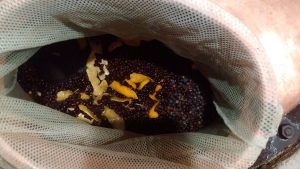
All you need to know
about gin and genever
in a nutshell
Welcome to the world of the oldest spirits: genever and gin.
Gin
The geography of gin
Gin can be done anywhere in the world. Legal definition differs according country.
The history of gin
The actual origins of gin can be traced back to Benelux between 13th and 16th century.
The medical use has been quickly let aside and distilleries quickly established and start producing genever. The name was then shortened into ‘Gin’ over time by the English, after they discovered the drink while fighting along the with the Dutch Soldiers in the late 1500s. The appreciation has been reinforced by the fact that a king from Netherland became the king of England (making Gin an English drink) and also by a distilling act in 1690 that allows everyone to distil. In 1690 after the distilling act anyone who wished to distill, simply needed to post a notice of intention before starting up (check the online course for the whole story).
How is gin made?
The ingredients aka the base material of gin
Gin is a clear neutral spirit. The base material can be as varied than for vodka. Gin can be made with any fermentable ingredients, like vodka. If vodka is infused with juniper, it becomes gin. According to EU regulation, Gin can in principle contain any alcohol of agricultural origin. It mostly depends (or has long depended) on locally available material. It is usually made from cereal, mainly wheat, which is the predominant agriculturally, derived base material of neutral alcohol and for most of the gins, it does not impact the final taste. The usual mash for English gin, for example, is 75% maize, 15% barley malt and 10% other grains, although rectified spirit from molasses is also used.
What impact the taste is:
—the quality of the distillation, and the choice of stills (pot vs. continuous)
—the methods to add flavourings
However now that techniques have improved, more and more producers are working on the base material in such a way that it influences the final taste. For example French G – Vine is produced from grape brandy, Gin Bavarka from potatoes, Cap rock Organic Gin from apples or Diploma Dry Gin is made from beetroot. Even wheat can be not neutral, for example from local, sustainably grown grains used for the Blue Gin to the French spring wheat in Hoxton Gin, exceptional crops pass on their particular nuances to the gin. Or at least, this is what marketing campaigns promise.
These flavouring agents define gin, not the base material. The more or less sophisticated way the different ingredients will be integrated in the spirit will define the quality. Most of the Juniper berries themselves are imported from Italy but some American Gins use local varieties.
Some components and what they bring to the wedding:
Juniper* gives the characteristic pine-like, heather, lavender notes. Coriander seeds bring spicy notes, sometimes peppery (if coming from Morocco), more citric and/or floral if it comes from East Europe (especially from the Czech republic). Angelica roots brings musky, earthy, dry aromas. Orris roots provide the final alcohol with earthy, violets aromas. It is also used as they have the capacity to hold volatile flavour compounds.
Speaking of which, dried citrus peels brings a certain zestyness and freshness. It is the most delicate flavour to capture, as it is highly volatile. This is the first component to evaporate during distillation process, after the heads. Temperature must not be too high if citrus peels are used.
Dried orange peels are known for bringing an intense slightly bitter edge. Cinnamon and cassia bark often bring sweet tropical note. Bitter or sweet almonds convey a marzipan hint. Liquorice gives a perception of sweetness, which softens the juniper
Many other ingredients can be used like nutmeg, caraway; actually, the whole range of worldwide available botanicals/fruits can be used.
The extraction techniques to create gin
As said in a previous post, the base material needs to be a good white spirits to create a good gin. Then this is all about how to integrate the flavours.
In the article below, we are going to explore the different methods, from the most sophisticated to the quicker and cheaper.
Distillation
Think essential oil. Essential oils are obtained via distillation. The ingredient is soaked into water and heated. The principle is that when distilled in the presence of alcohol the essential oils are released, mingle with the vapour and are carried across to be condensed as soon as cooled down in the cooler part of the still. The resulting liquid will be a concentrate of the ingredients; it is what is named essential oil.
Top-quality gins and genevers are flavoured this way. After one or more distillations the base spirit is redistilled one last time with the ingredients. The ingredient are whether in the spirit itself of suspended in a “botanical baskets” above the boiling spirit, in the upper part of the copper pots allowing the distilled vapour to pass though it (see percolation below) such as Bombay Sapphire. The vapour softly extracts aromatic and flavouring oils and compounds from the berries and spices as it travels through the chamber on its way to the condenser. Distilling the spirits with the botanicals is the most expensive method of adding flavourings. It requires not only time for each run but also a lifetime expertise of a master distiller. Only an experienced distiller knows when to cut and in which order proceeding to add flavours according to the characteristics of every ingredients and how long the run should last. For example the longer the gin run lasts the deeper and rootier the aromas.
To sum up. There are 2 way distillation is used to make gin.
There are two fairly similar methods of achieving this; direct distillation or redistillation.
In direct distillation the fermented grain mash is pumped into the still. Then it is heated and the spirit vapors pass through a “gin head”, a sort of percolator basket filled with Juniper, herbs and other natural ingredients. It picks up the delicate flavoring agents as it passes through and then condenses into a high proof Gin. Water is added to bring the product down to its bottling strength, usually 80°.
The other method, redistillation, differs only in that the fermented mash is first distilled into a flavorless neutral spirit. Then it is placed in a second still, containing a “gin head”, and is redistilled, with vapors absorbing the flavoring agents.
Infusion
Infusion is similar to maceration in that the flavouring agent is soaked in the white neutral spirit. The difference is that the alcohol is heated. This heat is maintained for several days and the result is a more flavourful and less expensive product. When the neutral spirit is infused, at least with Juniper, it is redistilled to fix the flavours.
Maceration
The goal is to obtain the aromatic substances from the raw materials. This method is used when the raw materials would lose some of their flavour or characteristics if they were heated. In basic terms, the raw material is immersed in the raw alcohol until that spirit absorbs the flavour. For Sacred Gin for example they have whole lemon macerated in the spirit up to 6 weeks.
The different ingredients are then blended to create the gin.
Cold compounding
This method consists of adding natural or artificial flavourings to the base spirit, this results in a lower quality product as the flavouring doesn’t bind as well to the base and often the most volatile aromas/flavours such as citrus will be lost very shortly.
We will mention this category later in the post about gin classification.
Percolation
Percolation can almost be seen as a variation of distillation. It can be done either hot or cold. The raw material (or flavouring agent) is placed in a container of sorts and the raw alcohol is either bubbled through it for a few days to weeks or it is brought to a boil, so that the vapours rise, percolate through the flavouring agent and fall back into the main pot, much like the old coffee percolators. The “hot” version is close to distillation. The different ingredients are then blended to create the gin.



Those images are coming from the marvelous Stauffenberg Gin’s production process.
Blending of gin
Premium gin distillers indeed distill their botanicals separately and will very precisely blend them all back together.
The styles of gin
More than any other spirits Gin can be considered as a canvas, especially on highly rectified neutral spirits. Over the years, many different styles of Gin have been developed.
Don’t forget to read the section on Genever to complete the question of the style of gin.
English gin
The United Kingdom produces mostly dry Gin, primarily from column stills. British gins tend to be high proof (90° or 45% ABV) and citrus-accented from the use of dried lemon and Seville orange peels in the mix of botanicals. British gins are usually combined into mixed drinks.
A Gin like Hendrick’s, where the flavourings for example rose and cucumber, are added after the last distillation can’t pretend to the name of Dry gin.
Plymouth Gin is another style of within what is generally named English Gin. It is relatively full-bodied (when compared to London Dry Gin). It is clear, slightly fruity, and very aromatic. Originally the local Gin style of the English Channel port of Plymouth, modern Plymouth Gin is nowadays made only by one distillery in Plymouth, Coates & Co., which also controls the right to the term Plymouth Gin.
Old Tom Gin is the last remaining example of the original lightly sweetened gins that were so popular in 18th-century England. The name comes from what may be the first example of a beverage vending machine. In the 1700s some pubs in England would have a wooden plaque shaped like a black cat (an “Old Tom”) mounted on the outside wall. Thirsty passersby would deposit a penny in the cat’s mouth and place their lips around a small tube between the cat’s paws. The bartender inside would then pour a shot of Gin through the tube and into the customer’s waiting mouth. Old Tom style gins still exist and are even having a revival these days. It is generally (or it was) slightly sweeter.
London Dry Gin is the dominant style of within what is generally named English Gin.
London dry Gin appeared soon after the continuous still was invented in 1831. This new still made a purer spirit possible, encouraging English distillers to try an unsweetened or dry style (Sugars had been used to mask the rough and unpleasant flavours that could show up in older pot
still production). This style is made with fermentable mash consisting of 75% corn, 15% barley malt, and 10% other grains, and is flavoured with a number of spices, herbs and botanicals. The distinctive London dry gin flavour comes primarily from juniper berries, but many other items are used, including orange peel, cardamom, cassia bark, coriander, and angelica root.
Originally, the phrase “London dry Gin” specified a geographic location; that the Gin was made in or near London. Now, the term is considered to be generic, London Dry gin can be made anywhere on earth, as the word is used to describe a style of Gin for which flavourings may be added only during the last
distillation and must be natural. The ethyl alcohol must be of high quality and the gin must contain at least 70% alcohol after distillation. No colouring may be added after distillation, though sugar may be added to the end product (but no more than 0.1g of sugar per liter). After distillation nothing else can be added except water.
American gin
American Dry Gins tend to be lower proof (80° or 40% abv.) and less flavourful than their English counterparts.
In addition to the required juniper, which defines Gin, these new American Gins are flavoured with a wider array of regional botanicals, regional fruit, citrus or floral ingredients, as well as herbs and spices.
Spanish gin
Spain produces a substantial amount of Gin, in the London Dry style from column stills. Most of it is sold for mixing with tonic water.
Contrary to common sense that associates England and high gin consumption, Philippines and Spain are bigger gin consuming countries. Spain is the largest Gin market in the EU and third largest in the world and the Philippines is the world’s largest Gin market with San Miguel being by far the largest brand. In global terms, Philippine gin accounts for some 43% of the world gin market.
Source: IWRS, 2013
Genever
Genever is the Dutch style of Gin which you can find, in the Netherland, Belgium, France and Germany.
The history of Genever is the history of Gin, so go and check above. If Gin can be done everywhere -to some extent-, Genever is made in the Netherland, Belgium, France and Germany.
Dutch Genever
Genever is distilled from a malted grain mash similar to that used for whisky, named moutwijn. Many of these gins are aged for one to three years in oak casks. Genevers are distilled at lower proof levels – and in pot stills- than English Gins (72-80 proof or 36-40% ABV is typical) and are generally fuller in body.
There are two types of jenever: oude (old) and jonge (young).This is not a matter of aging, but of distilling techniques.
Oude (“old”) Genever is the original style. It is straw-hued, relatively sweet and aromatic with maltey flavours. Production is closed to the whisky production, also in the proportion of malted barley (at least 15% malted barley). Addition of sugar is limited to 20 grams per liter. The resulted spirit can be aged in wood.
Jonge (“young”) Genever has a drier palate and lighter body. The neutral spirit must have no more than 15% malted barley and no more than 10 grams sugar per liter.
Korenwijn is like a Oude style but with more sugar content, more ageing in cask, and more moutwijn content. It contains from 51% to 70% malt wine and up to 20 g/l of sugar.
Genever is produced without discontinuity since the 1500s (notably by the firm Bols in Amsterdam).Germany produces Genever-style Gins called. German Gin is usually served straight up and cold.
German Genever
Three most famous styles:
Steinhaeger is an older style flavoured only with juniper. The name is derived from the city of Steinhagen, the only place where it is permitted to be produced. Steinhäger is typically sold in long brown clay pot (Steingut) bottles and in glass bottles made to look like earthenware.
Wachholder is a double distilled gin flavoured made only with crushed fermented junipers. (Wachholder is the German word for juniper)
Dornkaat, produced in the North Sea coast region of Frisia is both a style and a brand name. This spirit is lighter in body and more delicate in flavour than both Dutch Genever and English dry Gin.
The other IGP in Europe
The European Union regulations specify that only the alcohol made in Holland or Belgium, two northern French departments and two German federal states can use the name jenever/genever/genièvre. Recognized for its historic and cultural contribution, the European Union protected genever with 11 appellations or AOC of which most are exclusive to Belgium.
–Exclusive to Belgium, the Netherlands, small parts of France, and small parts of Germany: genever (jenever), grain genever (graanjenever), fruit genever (fruitjenever)
–Exclusive to Belgium and the Netherlands: old genever (oude jenever), young genever (jonge jenever)
–Exclusive to Belgium: O’de Flander real East-Flemish grain genever (O’de Flander Echte Oost-Vlaamse graanjenever), Hasselt genever (Hasseltse jenever), Balegem genever (Balegemse jenever), and Peket (Pékèt)
–Exclusive to two provinces of France: Flanders Artois genever (genièvre Flandres Artois)
–Exclusive to two states of Germany: East-Frisia cereal grain genever (Ostfriesischer Korngenever)
RESOURCES/SOURCES
The Drunken Botanist, Amy Stewart
Alcools, André Dominé
Gin, Lesley Jacobs Solmonson
Gin, Dave Broom
Wikipedia

